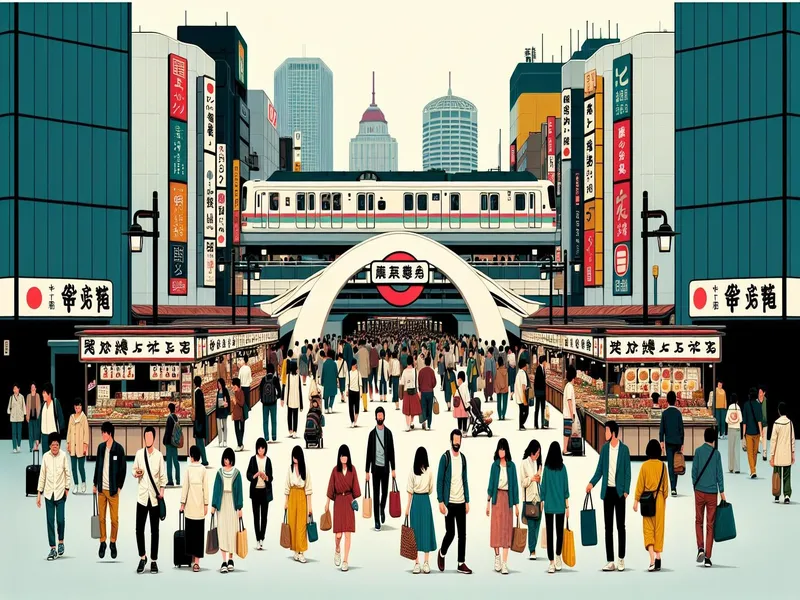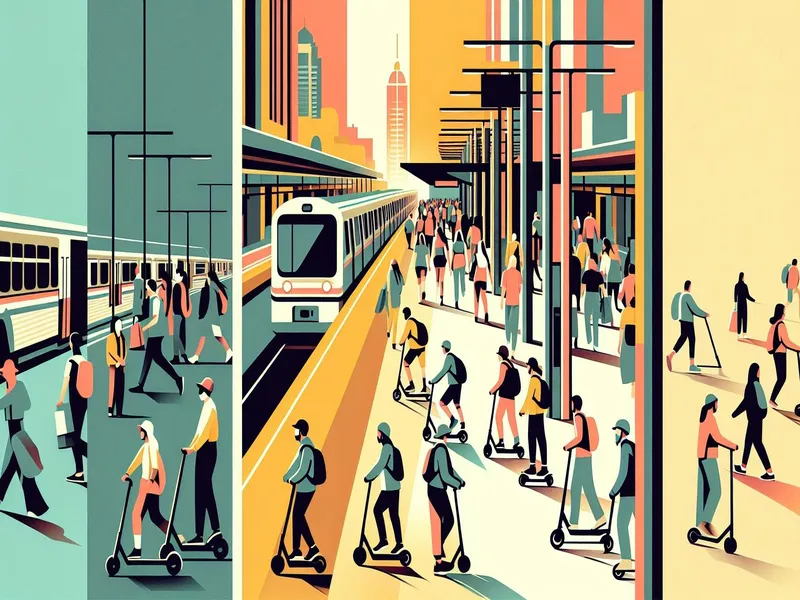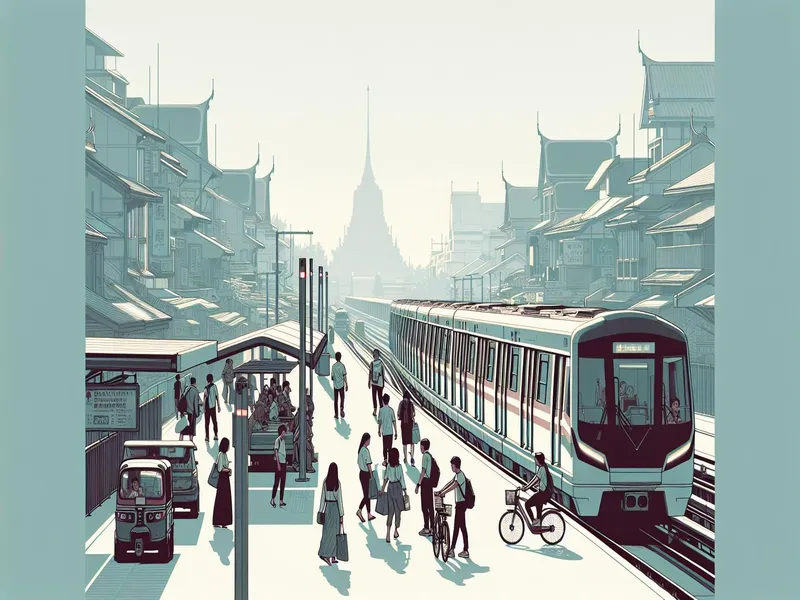
You’re probably looking for tips on how to make your journey smoother and more enjoyable. Whether it’s finding the best public transportation or knowing where to stay, I’ve got you covered.
Without a solid plan, you could face long commutes, missed attractions, and unnecessary stress. Imagine spending hours stuck in traffic or getting lost in a maze of unfamiliar streets. These challenges can turn what should be an exciting adventure into a frustrating ordeal.
Having traveled extensively across Asia’s major cities, I understand the ins and outs of urban travel here. From Tokyo’s efficient subways to Bangkok’s vibrant street markets, my experiences will help guide you through each unique cityscape with confidence.
Different travelers have different needs—families might prioritize safety and convenience while solo adventurers seek out hidden gems. I’ll tailor my advice to ensure it meets your specific preferences and requirements.
Overview of Urban Travel in Asia
Urban travel in Asia can be both thrilling and challenging. Picture this: you’re exploring the bustling streets of Tokyo, neon signs illuminating your path. The sheer energy is intoxicating but also a tad overwhelming if you don’t know where you’re going.
Let’s talk about public transportation. Asian cities often have efficient systems that put some Western counterparts to shame. For instance, the Tokyo Metro boasts 13 lines covering over 300 kilometers, making it easy to zip around the city quickly. But here’s a tip: avoid rush hours unless you’re okay with being packed like sardines in a tin!
Then there’s the food scene—ah, glorious street food! Imagine munching on steaming dumplings from a vendor in Taipei’s night markets or slurping spicy ramen at a tiny Tokyo eatery. It’s not just food; it’s an experience that brings you closer to local culture.
Exploring Language Barriers
Language can be tricky but not insurmountable. In cities like Seoul and Bangkok, many younger locals speak English, which helps immensely. But, learning basic phrases never hurts and often earns you smiles from locals.
- Hello: “Annyeong” (Korean), “Sawadee” (Thai)
- Thank You: “Arigato” (Japanese), “Xie Xie” (Chinese)
Accommodation Options
Finding a place to stay varies widely across Asia’s urban landscapes:
- Luxury Hotels: Ideal for those wanting comfort.
- Hostels: Great for budget travelers.
- Airbnb: Offers unique stays like traditional ryokan in Japan or modern condos in Singapore.
I remember staying at a capsule hotel in Tokyo—a quirky yet practical option that’s surprisingly comfortable even though its size.
Safety Tips
Safety is generally good but always exercise caution as you would anywhere else:
- Keep your belongings secure.
- Use reputable transport services.
- Be aware of common scams targeting tourists.
For example, I once encountered a friendly tuk-tuk driver in Bangkok who offered an ‘amazing tour’ for dirt cheap rates—turns out it was more about visiting his friends’ shops than famous sights!
Popular Cities for Urban Travel

Exploring urban landscapes in Asia offers a mix of modernity and tradition. Here are some must-visit cities that showcase the best of urban travel.
Tokyo, Japan
Tokyo’s a city where ancient meets futuristic. My first trip here felt like stepping into a sci-fi movie with temples on one corner and towering skyscrapers on the next. The Tokyo Metro is your best friend—it’s punctual and covers almost every nook and cranny of the city. Don’t miss out on Harajuku for its quirky fashion or Shibuya Crossing, often called the busiest pedestrian crossing in the world. For foodies, Tsukiji Outer Market offers fresh sushi that’s to die for.
Seoul, South Korea
Seoul blends cutting-edge tech with rich history seamlessly. When I visited, exploring through neighborhoods like Myeongdong was an adventure in itself—think endless shopping streets paired with delicious street food like tteokbokki (spicy rice cakes). The city’s subway system is incredibly efficient; just grab a T-money card at any station. Don’t forget to hike up to Namsan Tower for panoramic views or explore traditional palaces like Gyeongbokgung, which offer free guided tours in English.
Bangkok, Thailand
Bangkok’s vibrant energy can be both thrilling and overwhelming. On my last visit, I was mesmerized by the contrast between bustling markets and serene temples. Hop on a tuk-tuk ride (just beware of scams) or take the BTS Skytrain for quick commutes between attractions like the opulent Grand Palace and lively night markets such as Chatuchak Weekend Market. Pro tip: indulge in local delicacies like Pad Thai from street vendors—it’s both cheap and mouthwateringly good.
These cities captivate with their unique blend of culture, cuisine, and convenience, making them top choices for urban explorers.
Modes of Transportation

When exploring urban travel in Asia, getting around efficiently is key. Let’s jump into the various modes of transportation you can use to navigate these bustling cities.
Public Transit Systems
Asian cities boast some of the world’s most efficient public transit systems. For example, Tokyo’s Metro covers nearly every corner of the city. You can zip from Shibuya Crossing to Asakusa without breaking a sweat! Seoul’s subway system is equally impressive, with clear signage and frequent trains. In Bangkok, the BTS Skytrain glides above traffic jams, making it super convenient for hopping between markets and malls.
Pro Tip: Grab a rechargeable transit card like Suica (Tokyo) or T-money (Seoul) for seamless travel. These cards save time and spare you from fumbling with cash.
Ride-Sharing Services
Ride-sharing services like Uber and Grab have become game-changers in Asian metropolises. When you’re lugging around shopping bags or just too tired to navigate public transport, these apps are lifesavers. I remember using Grab in Kuala Lumpur when my feet couldn’t handle another step after a day at Petronas Towers.
These services offer convenience and safety features like driver ratings and GPS tracking. Plus they often provide promotions that save you money on rides—who doesn’t love a good deal?
Quick Tip: Ensure your phone has enough data for app usage as Wi-Fi might not always be available on the go.
Biking and Walking
Sometimes the best way to see a city is by foot or bike. Cities like Kyoto offer picturesque paths perfect for leisurely strolls or bike rides through historic districts filled with temples and gardens. In Ho Chi Minh City, you’ll find dedicated bike lanes making cycling an enjoyable option even though the city’s chaotic traffic.
Walking gives you an up-close view of local life—like stumbling upon hidden street food stalls selling delicious bánh mì sandwiches in Hanoi!
Heads Up: Always carry water; it’s easy to get dehydrated while exploring under Asia’s sun.
Cultural Attractions and Activities
Urban travel in Asia offers a rich world of cultural attractions and activities. Whether you’re a history buff, a foodie, or a night owl, there’s something for everyone.
Historical Landmarks
Asia’s urban landscapes are dotted with historical landmarks that tell stories of ancient civilizations and modern transformations. In Tokyo, visiting the Senso-ji Temple in Asakusa is like stepping back in time. The vibrant market leading up to the temple offers traditional snacks and souvenirs. Seoul’s Gyeongbokgung Palace is another must-visit; it’s fascinating to see the changing of the guard ceremony against the backdrop of skyscrapers. Bangkok’s Grand Palace, with its intricate architecture and stunning Emerald Buddha, showcases Thailand’s royal heritage.
Local Cuisine
Exploring local cuisine is a delightful way to connect with a city’s culture. When in Bangkok, you can’t miss trying Pad Thai from street vendors; it’s both affordable and delicious. Tokyo’s Tsukiji Outer Market is where I had my first taste of fresh sushi—trust me, it’s an experience you’ll remember! In Seoul, Myeongdong Street Food Alley serves everything from tteokbokki (spicy rice cakes) to hotteok (sweet pancakes). Each bite tells you something unique about the local culture and traditions.
Nightlife and Entertainment
Asia’s cities come alive at night with diverse entertainment options. In Tokyo, Shibuya Crossing is iconic—it’s like Times Square on steroids! Nearby karaoke bars offer fun ways to unwind after exploring all day. Seoul’s Hongdae district buzzes with energy; live music cafes and clubs keep you entertained till dawn. If you find yourself in Bangkok, Khao San Road transforms into a bustling nightlife hub with bars offering live music, cheap drinks, and endless people-watching opportunities.
These cities captivate visitors with their unique blend of history, culinary delights, and vibrant nightlife scenes. So why not jump into these experiences on your next urban adventure in Asia?
Tips for Urban Travelers
Exploring Asia’s bustling cities can be both thrilling and daunting. Here are some tips to make your urban travel experience smooth and memorable.
Best Times to Visit
Timing can make or break your trip. The best time for urban travel in Asia usually depends on the city and the season. For instance, Tokyo is breathtaking during cherry blossom season (late March to early April). If you’re heading to Bangkok, aim for the cooler months from November to February when temperatures are more manageable. Avoid monsoon seasons in places like Mumbai from June to September unless you enjoy getting drenched!
Safety Considerations
Staying safe should always be a priority. In crowded areas like Seoul’s Myeongdong district, keep your belongings secure; pickpockets often target tourists. I once had my wallet nearly snatched at a busy night market in Bangkok, but thankfully I caught it in time! Also, use reputable transportation options—stick with licensed taxis or ride-sharing services like Grab instead of hopping into random vehicles.
Budget Travel Options
Traveling doesn’t need to expensive. Opt for budget-friendly accommodations like hostels or Airbnb stays—you’ll save money and meet fellow travelers too! Street food is not only delicious but also inexpensive; think yakitori stands in Tokyo or street noodles in Bangkok. Public transport is another way to save—grab a metro card in Seoul or use Bangkok’s BTS Skytrain for affordable rides across the city.
In Closing
Urban travel in Asia offers an unparalleled mix of tradition and modernity, making every city a unique adventure. With careful planning and a bit of curiosity, you can navigate the bustling streets and discover hidden gems.
From the seamless public transportation systems to diverse culinary landscapes, there’s always something new to experience. Remembering basic safety tips and being open to local interactions can make your journey both enjoyable and memorable.
Whether you’re exploring ancient temples or savoring street food delicacies, urban travel in Asia promises an enriching experience that you’ll cherish for years to come.